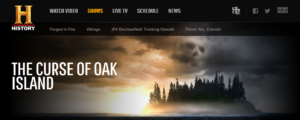I’ve been deep into map history sleuthing, putting up a remarkably forthcoming statement about the Horne Lake trail: Horne Lake – the Trail is the Lake. Also, the research, to date, of Col. Engineer Römer’s ca. 1698 Memorial & Mappe of his journey to 5 Indian Nations in Upper New York State. And a comment to my US friends and relatives about 1848. Why it is an Important Year for Canada (ought to be a National Holiday – maybe “Parliamentary Democracy Day”?), and the 2nd British Empire. Much more important to us than, say, 1776. Also gentle humour about the War of 1812. Which we won.
![]() In the midst of all this, a remarkable find whilst reporting on the anomaly of “Nanhygansett Bay” limestone: a wonderful image of antique flagstones; from Historic Decorative Materials of West Hatfield, MA. This is an e-commerce site supplying aged French and Belgian floorings to the fine home building market. An incredibly neat line of products from merchant co-founders: Emmi & François Micallef
In the midst of all this, a remarkable find whilst reporting on the anomaly of “Nanhygansett Bay” limestone: a wonderful image of antique flagstones; from Historic Decorative Materials of West Hatfield, MA. This is an e-commerce site supplying aged French and Belgian floorings to the fine home building market. An incredibly neat line of products from merchant co-founders: Emmi & François Micallef

